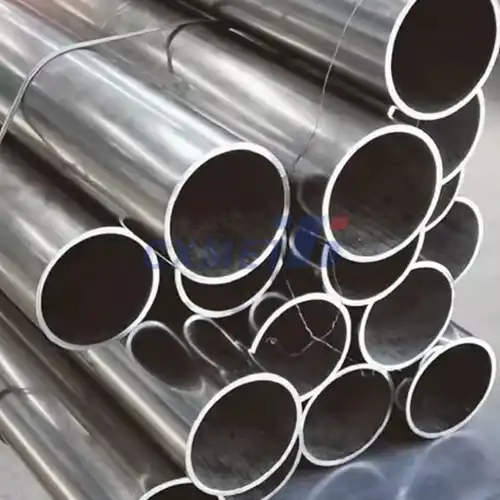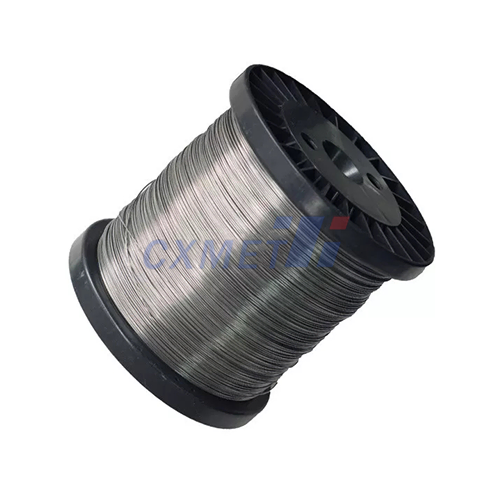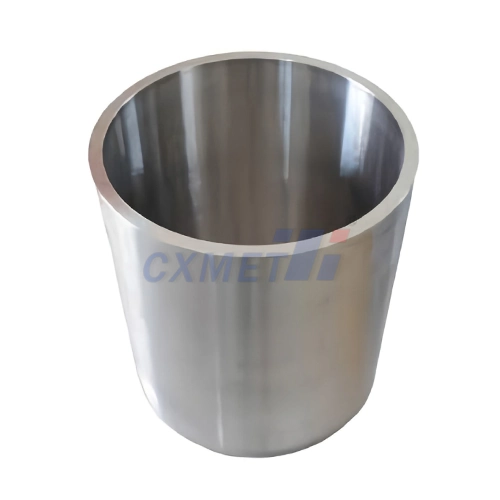- English
- French
- German
- Portuguese
- Spanish
- Russian
- Japanese
- Korean
- Arabic
- Greek
- German
- Turkish
- Italian
- Danish
- Romanian
- Indonesian
- Czech
- Afrikaans
- Swedish
- Polish
- Basque
- Catalan
- Esperanto
- Hindi
- Lao
- Albanian
- Amharic
- Armenian
- Azerbaijani
- Belarusian
- Bengali
- Bosnian
- Bulgarian
- Cebuano
- Chichewa
- Corsican
- Croatian
- Dutch
- Estonian
- Filipino
- Finnish
- Frisian
- Galician
- Georgian
- Gujarati
- Haitian
- Hausa
- Hawaiian
- Hebrew
- Hmong
- Hungarian
- Icelandic
- Igbo
- Javanese
- Kannada
- Kazakh
- Khmer
- Kurdish
- Kyrgyz
- Latin
- Latvian
- Lithuanian
- Luxembou..
- Macedonian
- Malagasy
- Malay
- Malayalam
- Maltese
- Maori
- Marathi
- Mongolian
- Burmese
- Nepali
- Norwegian
- Pashto
- Persian
- Punjabi
- Serbian
- Sesotho
- Sinhala
- Slovak
- Slovenian
- Somali
- Samoan
- Scots Gaelic
- Shona
- Sindhi
- Sundanese
- Swahili
- Tajik
- Tamil
- Telugu
- Thai
- Ukrainian
- Urdu
- Uzbek
- Vietnamese
- Welsh
- Xhosa
- Yiddish
- Yoruba
- Zulu
What are the Heat Treatment and Processing Conditions for ASTM B861 Titanium Tubes?
ASTM B861 is a critical standard that governs the specifications for seamless and welded titanium tubes, a material widely used in various industries due to its exceptional strength, corrosion resistance, and lightweight properties. Understanding the heat treatment and processing conditions for these tubes is crucial for ensuring their optimal performance and reliability. In this comprehensive blog, we will delve into the intricacies of ASTM B861 titanium tubes, exploring the key factors that influence their manufacturing and treatment processes.
What are the Heat Treatment Requirements for ASTM B861 Titanium Tubes?
Titanium tubes manufactured in accordance with ASTM B861 are subject to specific heat treatment requirements to achieve the desired mechanical properties and microstructural characteristics. These heat treatment processes can vary depending on the intended application and the specific grade of titanium used. Factors such as temperature, duration, and cooling rates play a critical role in determining the final properties of the tubes.
The most common heat treatment processes for ASTM B861 titanium tubes include annealing, solution treating, and aging. Annealing is performed to relieve residual stresses, improve ductility, and enhance the corrosion resistance of the tubes. This process typically involves heating the tubes to a temperature range of 650°C to 780°C, holding them at that temperature for a specified duration, and then slowly cooling them to room temperature. The cooling rate during annealing can have a significant impact on the microstructure and properties of the tubes, with slower cooling rates generally resulting in a more stable and homogeneous microstructure.
Solution treating, on the other hand, is used to dissolve and homogenize the alloying elements in the titanium matrix. This process involves heating the tubes to a higher temperature, typically between 900°C and 1050°C, and then rapidly quenching them to room temperature or a lower temperature. The rapid quenching helps to retain the desired microstructural characteristics and mechanical properties. Solution treating is often followed by an aging or precipitation hardening step, where the tubes are heated to a lower temperature, typically between 480°C and 650°C, and held for a specific duration to precipitate fine intermetallic compounds, further enhancing the strength and hardness of the material.
The specific heat treatment requirements for ASTM B861 titanium tubes can vary depending on the alloy composition and the desired application. For example, Ti-6Al-4V, a widely used titanium alloy, may undergo a solution treatment and aging process to achieve a combination of high strength, good ductility, and improved fatigue life. In contrast, commercially pure (CP) titanium grades, which have a simpler chemical composition, may only require a straightforward annealing heat treatment to optimize their properties.
How do Processing Techniques Affect the Quality of ASTM B861 Titanium Tubes?
The manufacturing process of ASTM B861 titanium tubes can significantly impact their overall quality and performance. From the initial melting and casting to the final finishing operations, each step in the production chain requires careful consideration and control. Factors such as the choice of manufacturing method, the use of specialized equipment, and the implementation of quality control measures can all contribute to the consistency and reliability of the final product.
One of the primary manufacturing methods for ASTM B861 titanium tubes is the seamless tube manufacturing process, which involves the use of a piercing mill or a piercing press. In this process, a solid titanium billet is heated and then pierced to create a hollow tube, which is subsequently further reduced in diameter and elongated to the desired dimensions. The seamless tube manufacturing process is known for producing tubes with a uniform microstructure and superior mechanical properties, as it minimizes the risk of weld defects and discontinuities.
Alternatively, ASTM B861 titanium tubes can also be produced using the welded tube manufacturing process. In this method, a titanium strip or sheet is formed into a tubular shape and then welded along the seam. The welding process, which can be performed using techniques such as tungsten inert gas (TIG) or laser welding, requires precise control over parameters like welding current, voltage, and shielding gas flow to ensure the integrity of the weld. Proper post-weld heat treatment is also crucial to relieve residual stresses and optimize the microstructure in the weld zone.
Regardless of the manufacturing method, the quality of ASTM B861 titanium tubes is also influenced by the choice of raw materials, the cleanliness of the production environment, and the implementation of stringent quality control measures. Proper handling and storage of the tubes, as well as the use of specialized equipment for tasks like tube straightening, threading, and surface finishing, can all contribute to the overall quality and consistency of the final product.
In addition to the manufacturing process, the surface treatment of ASTM B861 titanium tubes can also impact their performance. Techniques such as pickling, passivation, and electropolishing can be used to remove surface contaminants, improve corrosion resistance, and enhance the aesthetic appearance of the tubes. The selection of the appropriate surface treatment method depends on the specific application requirements and the desired level of surface cleanliness and finish.
What are the Key Considerations for Selecting ASTM B861 Titanium Tubes?
When selecting ASTM B861 titanium tubes for a specific application, there are several important factors to consider. These include the material grade, the dimensional tolerances, the mechanical properties, and the surface finish requirements. Understanding these considerations can help engineers and designers make informed decisions that ensure the tubes meet the necessary performance criteria and comply with industry standards.
Material Grade:
ASTM B861 covers a range of titanium and titanium alloy grades, each with its own unique chemical composition and corresponding mechanical properties. The most common grades include commercially pure (CP) titanium, as well as various alpha, alpha-beta, and beta titanium alloys, such as Ti-6Al-4V, Ti-3Al-2.5V, and Ti-5Al-2.5Sn. The selection of the appropriate material grade depends on the specific application requirements, such as strength, corrosion resistance, weldability, and cost considerations.
Dimensional Tolerances:
ASTM B861 specifies tight dimensional tolerances for the diameter, wall thickness, and straightness of the titanium tubes. These tolerances are critical for ensuring proper fit and function in the intended application, as well as maintaining consistent flow characteristics and minimizing the risk of leaks or failures. Adhering to the specified dimensional requirements is especially important in applications where the tubes are subjected to high pressures, elevated temperatures, or complex loading conditions.
Mechanical Properties:
The mechanical properties of ASTM B861 titanium tubes, such as tensile strength, yield strength, elongation, and hardness, are crucial for determining their suitability for a given application. These properties can be influenced by the chemical composition, heat treatment, and processing history of the material. Engineers and designers must carefully evaluate the mechanical requirements of the application and select the appropriate titanium grade and processing conditions to ensure the tubes can withstand the expected loads and stresses.
Surface Finish:
The surface finish of ASTM B861 titanium tubes can also be an important consideration, especially in applications where cleanliness, corrosion resistance, or aesthetic appearance are critical. Factors such as surface roughness, oxide layer thickness, and the presence of surface defects can impact the tube's performance and service life. Specialized surface treatments, such as polishing, electropolishing, or passivation, may be required to meet specific surface finish requirements.
Other Considerations:
In addition to the factors mentioned above, there are several other considerations when selecting ASTM B861 titanium tubes, including:
1. Welding and Joining: The ability to effectively weld or join the titanium tubes is essential for many applications, especially in the aerospace, petrochemical, and power generation industries. The selection of the appropriate welding process and the use of qualified welding procedures are crucial for ensuring the integrity of the final assembly.
2. Non-Destructive Testing (NDT): Depending on the criticality of the application, ASTM B861 titanium tubes may be subject to various non-destructive testing methods, such as ultrasonic testing, eddy current testing, or radiographic inspection, to verify the absence of internal defects or flaws.
3. Cost and Availability: The cost and availability of ASTM B861 titanium tubes can also be important considerations, especially in applications where the tubes are used in large quantities or require specialized manufacturing processes.
4. Environmental Factors: The suitability of ASTM B861 titanium tubes for a particular application may be influenced by environmental factors such as temperature, pressure, chemical exposure, and the presence of corrosive or erosive media.
Conclusion
In conclusion, the heat treatment and processing conditions for ASTM B861 titanium tubes are critical factors that ultimately determine the performance and reliability of these versatile materials. By understanding the key requirements and considerations, manufacturers, engineers, and end-users can optimize the selection and utilization of ASTM B861 titanium tubes to meet the demands of their respective industries.
The heat treatment processes, which include annealing, solution treating, and aging, play a crucial role in shaping the microstructural characteristics and mechanical properties of the tubes. The choice of manufacturing method, from seamless to welded tube production, also significantly impacts the quality and consistency of the final product. Additionally, factors such as material grade, dimensional tolerances, mechanical properties, and surface finish must be carefully evaluated to ensure the tubes meet the specific application requirements.
Through continuous research and innovation, the ongoing development of ASTM B861 titanium tubes will continue to shape the future of technological advancements. By leveraging the unique properties of these materials, industries can push the boundaries of performance, reliability, and efficiency, ultimately contributing to the advancement of modern engineering and manufacturing practices.
At SHAANXI CXMET TECHNOLOGY CO., LTD, we take pride in our extensive product range, which caters to diverse customer needs. Our company is equipped with outstanding production and processing capabilities, ensuring the high quality and precision of our products. We are committed to innovation and continuously strive to develop new products, keeping us at the forefront of our industry. With leading technological development capabilities, we are able to adapt and evolve in a rapidly changing market. Furthermore, we offer customized solutions to meet the specific requirements of our clients. If you are interested in our products or wish to learn more about the intricate details of our offerings, please do not hesitate to contact us at sales@cxmet.com. Our team is always ready to assist you.
References:
1. ASTM International. (2020). ASTM B861-20, Standard Specification for Titanium and Titanium Alloy Seamless and Welded Tubes for General Service. West Conshohocken, PA: ASTM International.
2. Donachie, M. J. (2000). Titanium: A Technical Guide (2nd ed.). Materials Park, OH: ASM International.
3. Leyens, C., & Peters, M. (Eds.). (2003). Titanium and Titanium Alloys: Fundamentals and Applications. Weinheim, Germany: Wiley-VCH.
4. Boyer, R., Welsch, G., & Collings, E. W. (Eds.). (1994). Materials Properties Handbook: Titanium Alloys. Materials Park, OH: ASM International.
5. Lütjering, G., & Williams, J. C. (2007). Titanium (2nd ed.). Berlin, Germany: Springer.
6. Collings, E. W. (1984). The Physical Metallurgy of Titanium Alloys. Metals Park, OH: American Society for Metals.
7. Fanning, J. C. (2005). The Use of Titanium in the Petrochemical Industry. JOM, 57(11), 18-21.
8. Eylon, D., Fujishiro, S., Postans, P. J., & Froes, F. H. (1984). High-Temperature Titanium Alloys - A Review. JOM, 36(4), 55-62.
9. Rao, G. A., Kumar, M., Srinivas, M., & Sarma, D. S. (2003). Effect of Thermomechanical Processing on Structure and Properties of Ti-6Al-4V Alloy. Materials Science and Engineering: A, 345(1-2), 55-65.
10. Qazi, J. I., Marquardt, B., Allard, L. F., & Rack, H. J. (2004). Phase Transformations in Ti-6Al-4V-xH Alloys. Materials Science and Engineering: A, 386(1-2), 254-263.





